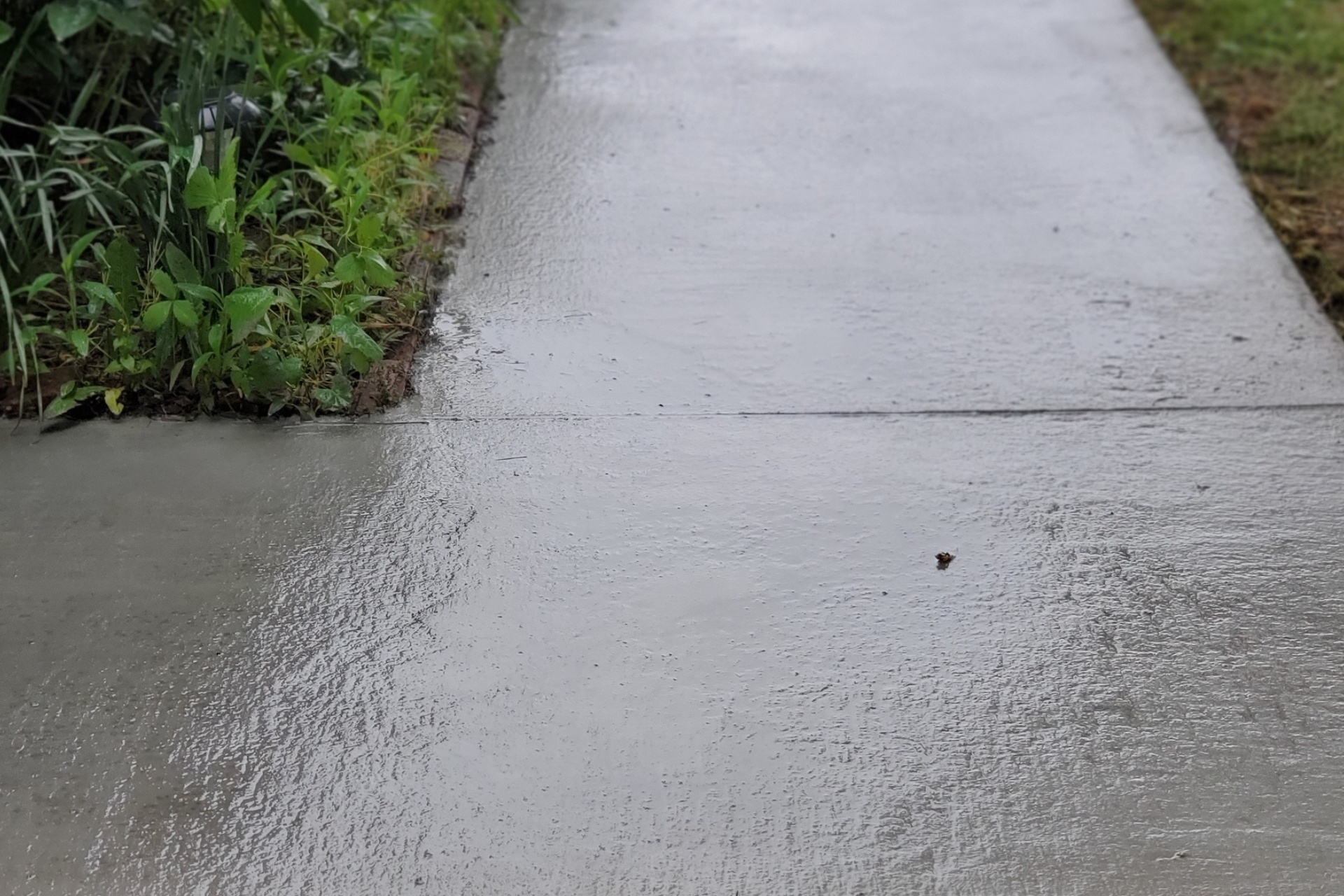Concrete resurfacing reduces your costs and boosts curb appeal by applying a new surface over the old. Preparatory cleaning and fixing cracks help ensure proper adhesion. Options like polymer-modified overlays offer durability and design versatility.
You’ll save on full replacement costs and enjoy a customized look. However, the process requires time due to extensive preparation and may entail ongoing maintenance, such as regular sealing, adding to the long-term expense.
Alternatives like epoxy coatings or stamped concrete vary in durability and aesthetics, but they are less expensive than a complete replacement.
Understanding Concrete Resurfacing
Concrete resurfacing, a process that involves applying a new surface over existing concrete, offers a cost-effective way to enhance both aesthetics and functionality.
However, surface preparation is very important. This typically involves cleaning the existing concrete slab, repairing cracks or damages, and ensuring the surface is level.
Failure to adequately prepare the surface can lead to poor adhesion of the new layer and ultimately compromise the longevity of the resurfaced area.
Material choices play a key role in the success of a concrete resurfacing project.
Options range from polymer-modified overlays, which provide excellent adhesion and durability, to more decorative choices like stamped overlays or colored concrete, offering numerous design possibilities.
Each material comes with specific performance attributes, including resistance to wear, weather influences, and UV exposure.
Selecting the right resurfacing material requires a thorough analysis of the existing concrete condition, desired aesthetic outcome, and anticipated traffic or usage.
Weigh these factors carefully because they significantly influence the resurfacing material’s performance, maintenance needs, and lifespan.
Key Benefits Explored
Resurfacing your concrete surfaces provides a range of advantages from enhanced durability to improved aesthetics, each tailored to meet specific project requirements and expectations.
One of the primary advantages is cost efficiency. Resurfacing, rather than replacing, significantly reduces your overall expenses.
This process involves applying a new surface layer over the existing concrete, eliminating the need for complete demolition and reconstruction.
The materials and labor involved in resurfacing are considerably less expensive, providing a budget-friendly solution without compromising on quality or longevity.
Another critical benefit is aesthetic versatility. Concrete resurfacing offers a wide range of design options from simple color enhancements to intricate patterns that mimic natural stone, brick, or tile.
This flexibility allows you to customize your space to suit your tastes, enhancing the curb appeal and value of your property.
The technical advancements in resurfacing compounds and techniques ensure that these aesthetic improvements don’t sacrifice durability.
These surfaces are designed to withstand harsh weather, heavy traffic, and other environmental stressors, maintaining their appearance and integrity over time.
This combination of functional and decorative attributes makes concrete resurfacing a compelling option for both residential and commercial projects.
Common Drawbacks
While the benefits of resurfacing your concrete surfaces are significant, it’s important also to consider the potential drawbacks that can impact the outcome of your project.
One of the primary concerns is the installation time.
Unlike simple concrete pouring, resurfacing involves a detailed preparation process, including cleaning, repairing, and priming the existing surface before the actual resurfacing material can be applied.
This preparation phase is critical for ensuring adhesion and durability, but it significantly extends the overall project timeline.
Furthermore, maintenance requirements post-installation can deter some homeowners. Resurfaced concrete, depending on the materials and techniques used, might necessitate regular sealing to maintain its appearance and longevity.
This additional upkeep increases the long-term cost and the labor involved in preserving your resurfaced area.
Alternative Resurfacing Options
For homeowners seeking alternatives to traditional concrete resurfacing, a variety of innovative options offer both aesthetic versatility and enhanced durability. Two standout solutions are epoxy coatings and polymer overlays.
These alternatives not only address the limitations found in standard concrete resurfacing but also introduce a new realm of possibilities for customizing your space.
- Epoxy Coatings: Renowned for their resilience, epoxy coatings create a high-gloss finish that can transform dull concrete floors into vibrant, durable surfaces. Perfect for garages and basements, these coatings resist stains, abrasions, and moisture, providing a long-lasting solution that’s both practical and visually appealing.
- Polymer Overlays: Polymer overlays are ideal for a more decorative finish. These overlays can mimic the appearance of brick, stone, or wood, offering an aesthetic upgrade without the cost or complexity of real materials. Additionally, their flexibility and strength make them ideal for repairing cracked or damaged concrete, ensuring a smooth, attractive finish.
- Stamped Concrete: Although not a direct alternative to resurfacing, stamped concrete offers a way to aesthetically enhance new or existing concrete surfaces by imprinting patterns before the concrete fully sets.
Making the Right Choice
Selecting the optimal resurfacing option requires assessing your aesthetic preferences and your space’s functional demands.
You’ll need to examine the technical specifications of available materials and consider how they align with your expectations for durability, appearance, and usage patterns.
Every resurfacing option has a unique price tag, not only for the initial installation but also for its lifecycle maintenance.
Analyze the upfront costs against the long-term savings or expenses. Some materials, though cheaper initially, may require frequent repairs or replacements, leading to higher costs over time.
Each resurfacing material demands a different level of upkeep to maintain its appearance and functionality. Some options might need regular sealing or cleaning, while others are more resistant to wear and tear and require minimal maintenance.
You must weigh these factors against your capacity to commit time and resources to upkeep, ensuring that your choice aligns with your lifestyle and the practical use of your space.

